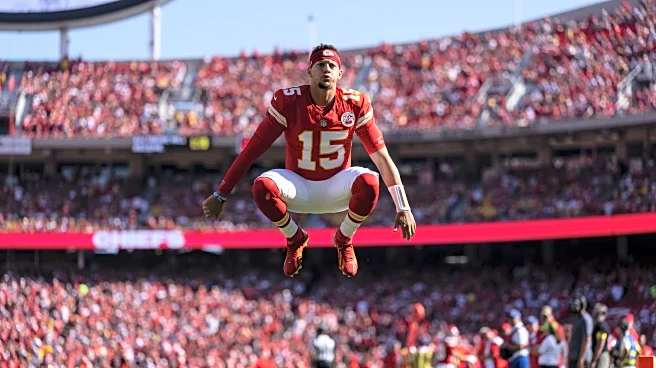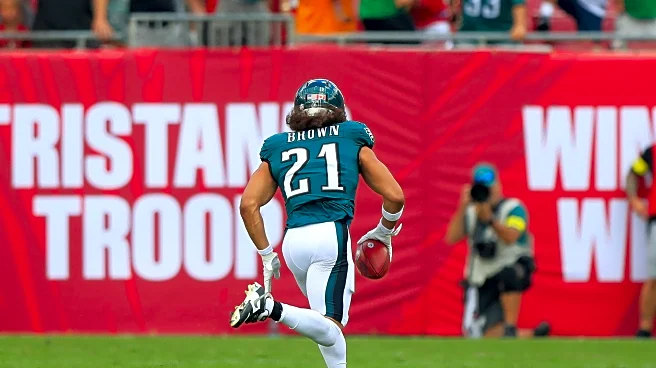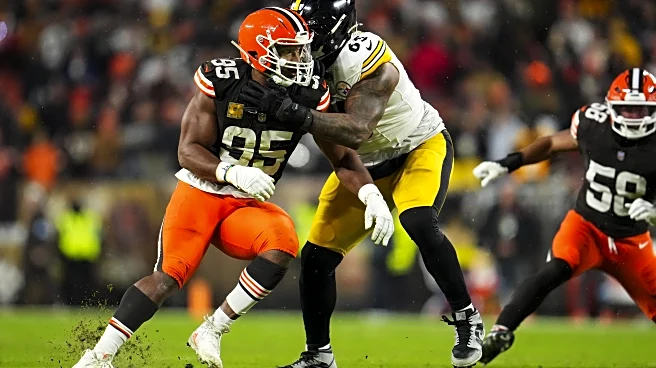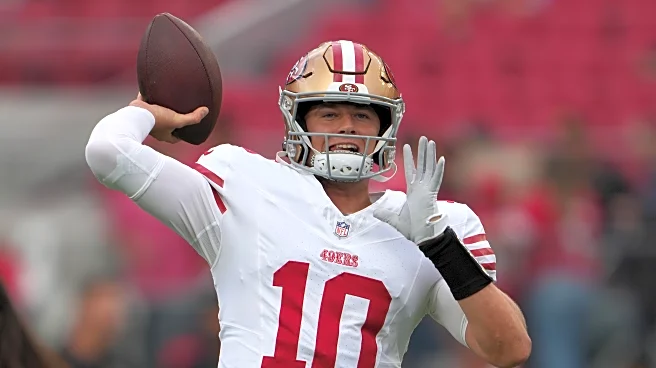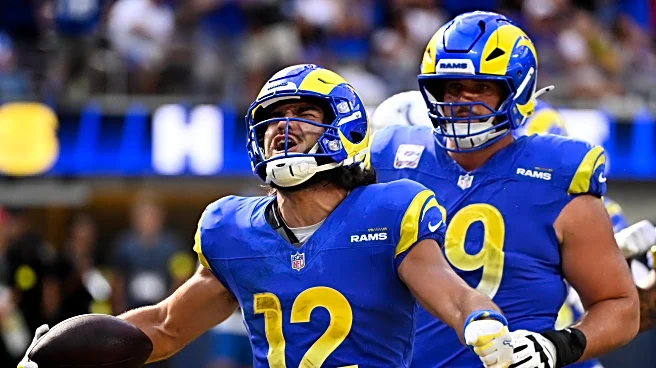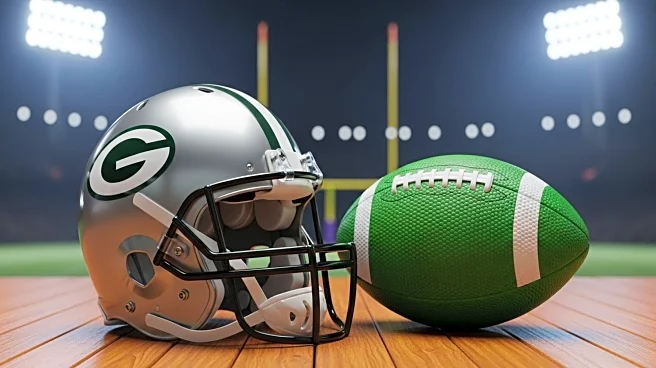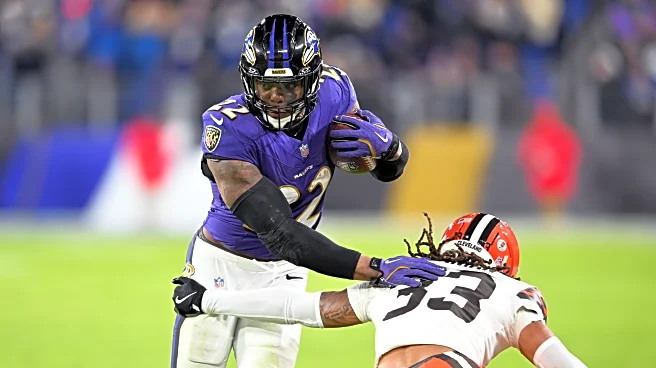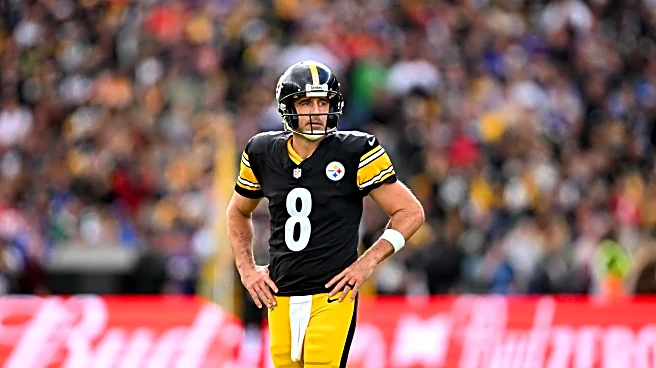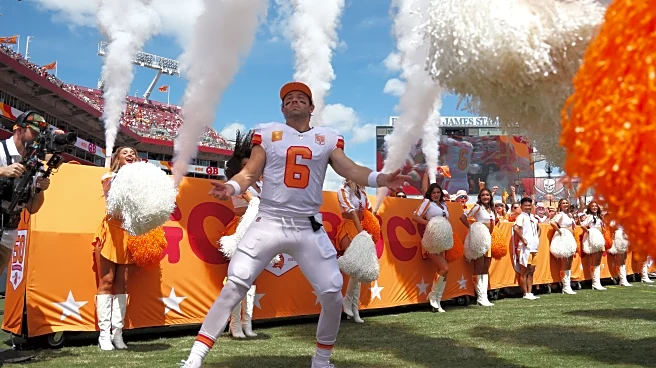What's Happening?
The NFL season is underway, and teams are grappling with various roster challenges. Key players like Cincinnati Bengals' quarterback Joe Burrow have suffered injuries, impacting team performance. The Bengals, for instance, are dealing with offensive line issues, allowing a high pressure rate on their quarterback. Similarly, the Cleveland Browns are facing offensive tackle injuries, while the Baltimore Ravens struggle with defensive line problems. Across the league, teams are identifying critical needs, such as the New York Jets' wide receiver shortage and the Green Bay Packers' interior offensive line issues. These challenges are shaping team strategies as they look towards the 2026 NFL Draft to address these gaps.
Why It's Important?
The ongoing roster challenges have significant implications for team performance and the broader NFL landscape. Injuries to key players can derail a team's season, affecting their playoff prospects and financial performance. For instance, the Bengals' struggles without Joe Burrow highlight the importance of depth in key positions. Teams like the Jets and Packers must address their roster needs to remain competitive. These issues also influence fan engagement and revenue, as underperforming teams may see decreased attendance and merchandise sales. The situation underscores the importance of strategic planning and resource allocation in professional sports.
What's Next?
As the season progresses, teams will continue to evaluate their rosters and make necessary adjustments. The upcoming NFL trade deadline presents an opportunity for teams to address immediate needs through trades. Additionally, teams will be scouting potential draft picks to fill long-term gaps. The performance of backup players and new acquisitions will be closely monitored to determine their impact on team success. Fans and analysts will be watching how teams adapt to these challenges and whether they can overcome them to achieve their season goals.

